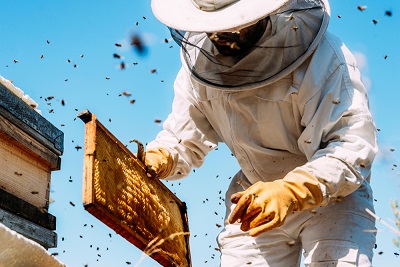Basic Insights on Beekeeping and How to Start
Basic Insights on Beekeeping and How to Start – The Buzz on Beekeeping: A Comprehensive Guide to Getting Started, Location, Profitability, and More
Beekeeping, also known as apiculture, is a rewarding and eco-friendly hobby that can also turn into a profitable venture. Not only does beekeeping support the vital role of pollinators in our ecosystem, but it also provides opportunities for harvesting delicious honey and other bee-related products. This article will serve as your go-to guide for starting beekeeping, selecting the right location, evaluating profitability, determining return on investment, selling honey, bees, and more.
Getting Started with Beekeeping
Starting beekeeping requires careful planning and a commitment to understanding the complex lives of bees. Here are the initial steps to embark on your beekeeping journey:
- Education: Begin by learning about bee behavior, hive management, and beekeeping equipment. Books, online resources, and local beekeeping clubs can be invaluable sources of information.
- Choose Hive Type: The two most common hive types are Langstroth and top-bar hives. Research and select the one that aligns with your goals and preferences.
- Obtain Equipment: Acquire essential beekeeping equipment such as hives, frames, protective gear, and tools.
- Source Bees: Obtain your bee colony either by purchasing a package of bees, nucleus colonies (nucs), or by capturing a swarm.
- Location Selection: Choose a suitable location for your beehives.
Location Matters
The location of your beehives is crucial for the health and productivity of your colony. Here are some factors to consider:
- Sunlight: Bees thrive in areas with ample sunlight, as it helps them regulate temperature within the hive.
- Water Source: A nearby water source is essential for bees to maintain proper hydration.
- Forage Availability: Bees require a variety of nectar and pollen sources for food. Select a location with diverse flowering plants.
- Proximity to Humans: While bees are usually docile, consider the proximity of your hives to human activity to prevent potential conflicts.
Profitability of Beekeeping
Beekeeping can be profitable, but it requires careful management and understanding of the market. Factors that influence profitability include honey production, other bee-related products, and local demand for these products.
Return on Investment (ROI)
The ROI in beekeeping varies and depends on factors such as initial investment, hive management, and honey yield. It’s common for beekeepers to wait at least one to two years before realizing a significant return on investment. Patience and diligent hive management are key to maximizing ROI.

Selling Honey and Bee Products
Selling honey and other bee-related products can be a lucrative aspect of beekeeping. Here’s how to get started:
- Harvesting Honey: Harvest honey when the frames are capped and filled. Extract the honey using an extractor, filter, and jars.
- Packaging and Labeling: Properly package honey in clean, sealed containers. Include labels with relevant information such as your brand name, honey type, and contact details.
- Marketing: Utilize farmers’ markets, local stores, online platforms, and social media to market and sell your honey and bee products.
Selling Bees
Selling bees, particularly nucleus colonies (nucs) or queen bees, can be an additional revenue stream. Beekeepers often sell bees to beginners or other beekeepers looking to expand their colonies.
Challenges and Considerations
Beekeeping isn’t without challenges. Pest and disease management, adverse weather conditions, and the need for ongoing learning are aspects to be prepared for.
List of essential equipment you’ll need to get started
Starting a beekeeping business, also known as apiculture, requires a range of equipment to properly manage and maintain bee colonies. Here’s a list of essential equipment you’ll need to get started:

- Hive Components:
- Hive Bodies/Supers: Wooden boxes that hold frames where bees build comb, store honey, and raise brood.
- Frames: Wooden or plastic frames that hold wax foundation or allow bees to build their own comb.
- Foundation: Sheets of beeswax or plastic with hexagonal cells imprinted, providing a guide for bees to build comb.
- Protective Gear:
- Bee Suit: A full-body suit with a veil to protect you from bee stings.
- Veil: A protective mesh veil that covers your head and neck.
- Gloves: Thick gloves that cover your hands and wrists, protecting against stings.
- Boots: Tall rubber boots to protect your feet and lower legs.
- Smoker:
- A device that produces smoke, which helps calm the bees during hive inspections by masking alarm pheromones.
- Hive Tool:
- A tool with a flat blade and a hooked end, used to pry apart hive components, lift frames, and scrape off excess propolis and wax.
- Feeding Equipment:
- Feeder: Used to provide supplemental feed like sugar syrup or pollen substitute to the bees, especially during times of scarcity.
- Queen Excluder:
- A mesh panel placed between hive bodies to prevent the queen from laying eggs in certain sections, usually above honey supers.
- Extractor:
- A machine used to extract honey from frames by spinning them, causing honey to be flung out of the comb.
- Bee Brush:
- A soft-bristled brush used to gently remove bees from frames or other hive components.
- Bee Feeder:
- Different from the internal hive feeder, this is an external feeder used to provide supplemental feed to bees, especially new colonies.
- Mite Monitoring and Treatment Supplies:
- Varroa Mite Treatment: Medications or treatments to manage Varroa mites, a common bee pest.
- Monitoring Tools: Devices to assess mite levels within the hive.
- Hive Stand:
- A platform or stand that elevates the hive off the ground, protecting it from moisture and pests.
- Beekeeping Books and Resources:
- Educational materials to help you learn about bee behavior, hive management, and best practices.
- Transportation and Storage:
- A secure vehicle or trailer to transport hives and equipment, as well as a suitable storage space for your equipment when not in use.
- Personal First Aid Kit:
- It’s important to have a basic first aid kit on hand in case of bee stings or minor injuries.
Pros and Cons of Beekeeping
Pros of Beekeeping
- Environmental Impact: Beekeeping plays a crucial role in pollination, supporting the growth of crops and flowering plants. Healthy bee colonies contribute to a more robust ecosystem and increased biodiversity.
- Honey Production: One of the most obvious benefits is the harvest of delicious honey. Beekeepers can enjoy their own fresh, raw honey or sell it to generate income.
- Other Bee Products: In addition to honey, beekeeping can yield other valuable products such as beeswax, royal jelly, pollen, and propolis, which have various applications in cosmetics, food, and health products.
- Educational and Therapeutic: Beekeeping offers a unique learning experience about the complex lives of bees and their role in nature. Many beekeepers find working with bees to be a meditative and therapeutic activity.
- Connection to Nature: Beekeeping fosters a closer connection to the natural world, as beekeepers observe the seasons, weather, and plant cycles that impact their colonies.
- Sense of Accomplishment: Successfully managing bee colonies and watching them thrive can provide a strong sense of accomplishment and satisfaction.
- Community: Beekeeping communities are often tight-knit and supportive, offering a network of like-minded individuals who share knowledge, advice, and resources.

Cons of Beekeeping
- Initial Investment: Beekeeping requires an upfront investment in equipment, bees, protective gear, and education. This initial cost can be a barrier for some beginners.
- Time and Effort: Beekeeping demands consistent attention and time. Regular hive inspections, management, and potential troubleshooting can be time-consuming, especially during the active beekeeping season.
- Stings: Despite precautions, beekeepers are likely to experience bee stings. While many beekeepers become accustomed to stings, they can be painful or cause allergic reactions in some individuals.
- Weather Dependency: Weather conditions greatly influence bee behavior and productivity. Unpredictable weather patterns can impact honey production and hive health.
- Pest and Disease Management: Bees are susceptible to various pests and diseases that require diligent monitoring and management. Dealing with issues like Varroa mites and American foulbrood can be challenging.
- Regulatory and Legal Considerations: Beekeeping regulations vary by location. Some areas may require permits or compliance with specific guidelines, adding an extra layer of complexity.
- Emotional Investment: The loss of bee colonies due to disease, pests, or other factors can be emotionally challenging for beekeepers who invest time and care into their hives.
Beekeeping offers a fascinating and potentially profitable journey for those willing to invest time, effort, and resources. From the initial steps of learning about bees to selecting the right location, evaluating profitability, and venturing into honey and bee product sales, beekeeping is a multifaceted endeavor that rewards both the bees and the beekeeper. By understanding the nuances of bee behavior, practicing responsible hive management, and staying connected with the beekeeping community, you can set yourself up for a fulfilling and fruitful beekeeping experience.
YouTube Channel: Farming South Africa
Facebook Page: Farming Life
Back To Home Page: Farming South Africa

